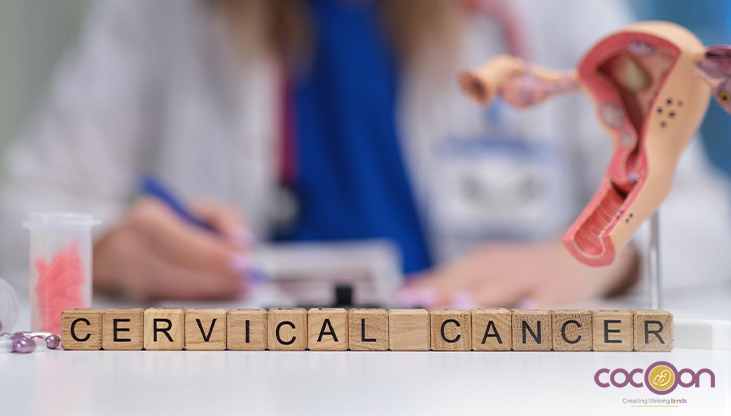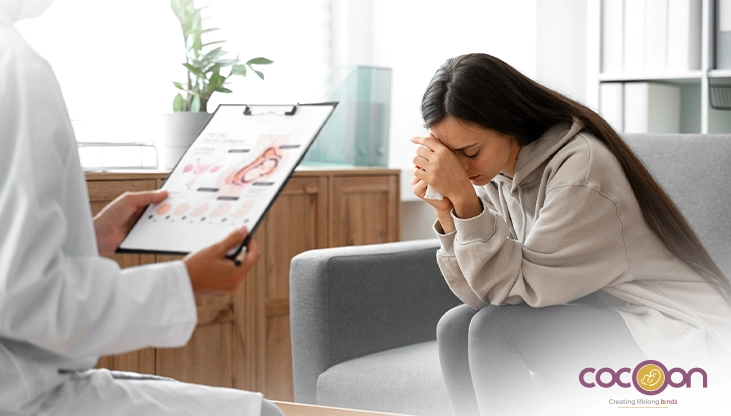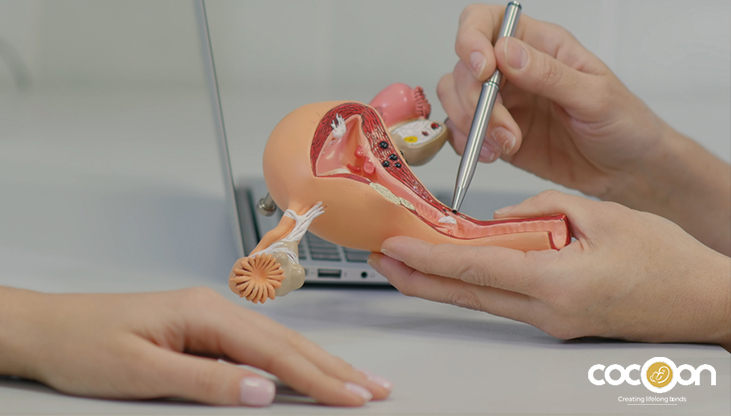Go back to the years when you were a teenage girl, and you might have noticed breast development, body odor, and even acne. This showed that your body prepared you for secondary growth. Now came your pregnancy; your body shifted again: weight gain, stretch marks, and an expanding belly. This showed that your body prepared you for nurturing a new life.
Now, you’ve entered another beautiful phase of a woman’s life: “menopause.” You might be noticing hot flashes, night sweats, mood changes, or bone thinning, which may feel overwhelming and challenging. But this means your body is preparing for the transition phase, “end of menstrual cycle.”
Every life stage brings changes linked to your body’s growth and role, and menopause symptoms are no different. These symptoms or changes aren’t “bad”; they just mean your body is shifting gears. The key lies in awareness and knowing how to manage menopause symptoms. Like all your phases of life needed nutrition, physical exercise, and professional guidance, menopause required the same as well.
Read the article to know how, with the right menopause management like calcium-rich foods, leafy greens, and hormone therapy under medical guidance, you can embrace it gracefully.
How to Manage Menopause Symptoms?
Menopause is like your reproductive organ telling you, “I’ve worked hard enough; time to take a break.” It’s the natural stage of a woman’s life when periods stop, usually in your late 40s or 50s. This means the woman’s body is no longer required to prepare for pregnancy every month, giving freedom from those responsibilities. This is an opportunity to begin a new, calmer phase of life.
But this phase comes with many symptoms, such as night sweats, irregular periods, vaginal dryness, sleep disturbances, and mood changes (anxiety and irritability), which can be harder to navigate. But thankfully, with proper lifestyle changes, adding nutrition and professional guidance for menopause, you can address them smoothly and enjoy your new phase of life.
Here are the ways that can help you manage your menopausal symptoms.
A. Proper Menopause Nutrition
Including nutritionally rich foods that can help keep bones strong, decrease hot flushes, improve digestion, and boost mood. So that you can handle the symptoms easily.
- Include fruits and vegetables for vitamins and fiber to reduce hot flushes and improve food digestion and metabolism.
- You can take milk, yogurt, and cheese for calcium and vitamin D to maintain stronger bones.
- Whole grains such as brown rice, oats, and whole wheat bread can help enhance your heart health and maintain stable energy levels.
- Lean proteins such as fish, beans, lentils, and chicken can help strengthen your muscle strength and reduce hormonal fluctuation.
- Healthy fats such as olive oil, nuts, seeds, and fatty fish help reduce swelling and promote hormone health.
B. Lifestyle Changes for Menopause
Incorporating the lifestyle changes given below can reduce mood swings, sleep problems, and anxiety, which are common menopause symptoms.
- Do walking, yoga, and stretching to improve your sleep and maintain a healthy body weight.
- Keep your stress under control through meditation and deep breathing to reduce anxiety and irritability.
- Follow a regular sleep pattern and keep bedrooms cool and dark to get enough quality sleep.
- Avoid smoking, limit alcohol, and cut back on caffeine to avoid worsening of symptoms.
- Build social connections and share your feelings with your friends, family, or support groups to know that you are not alone in this journey.
C. Menopause Treatment Options
Sometimes lifestyle changes and nutrition are not enough to ease the menopausal symptoms. That’s why you need to consult a professional for the proper treatment guidance.
These treatments can help manage severe symptoms, helping you enjoy a calmer mind and body.
- Hormone Replacement Therapy (HRT), such as transdermal estrogen patches, micronized progesterone daily oral pills, etc., can relieve hot flashes and the severity of symptoms under a doctor’s advice.
- Non-hormonal medications, such as antidepressants, help manage mood swings and some other emotional symptoms.
- Lubricants or moisturizers can help manage vaginal dryness and discomfort.
- Herbal supplements such as soy isoflavones may be considered because they contain phytoestrogens, meaning they behave similarly to the body's own estrogen. However, it needs to be taken only after medical guidance for safety purposes.
Note: All the menopause management options are for educational purposes and are not a replacement for medical advice. For the right treatment, consult your doctor only.
What are the 48 Common Symptoms of Menopause?
No two women’s menopause is the same; however, most may go through at least one of 48 signs at some point—during perimenopause, menopause, or post-menopause.
The 48 Common Symptoms of Menopause are:
- Nail changes
- Recurrent UTI's
- Tingling extremities
- Night sweats
- Nausea and digestive issues
- Changes in breast size
- Lack of motivation
- Panic disorders
- Sleep issues and insomnia
- Mood swings
- Dry eyes
- Anxiety
- Changes in skin texture
- Sagging breasts
- Bladder weakness
- Depression
- Bloating
- Dizziness
- Worsening PMS
- Itch crawly skin
- Irregular periods
- Dry mouth
- Acne
- Altered skin sensation
- Joint pain
- Brain fog
- Dental problems
- Changes in taste and smell
- Body odour
- Decreasing fertility
- Irritability
- Weight gain
- Heart palpitations
- Headaches and migraines
- Thinning hair
- Loss of concentration
- Feeling cold
- Changes in intimate drive
- Burning mouth syndrome
- Sore breasts
- Hot flushes
- Muscle tension
- Breathing difficulties
- Loss of self-confidence & self-esteem
- Short-term memory issues
- Vaginal dryness
- Loss of bone density
- Fatigue
How Long Does Menopause Last
The transition phase of menopause (perimenopause) usually begins in your mid-40s. The entire process generally lasts about seven years; however, it can take about 14 years. If you have not gotten periods for one year, that means you have reached menopause. Immediately after you reach menopause, you transition into postmenopause and this phase lasts for the rest of your life.
In simple meaning:
Perimenopause (Transition Phase) → lasts around 7 years (sometimes up to 14 years)
↓
Menopause → confirmed after 1 year without periods
↓
Postmenopause → lasts for the rest of your life
Conclusion
Don’t get overstressed about menopause symptoms; every woman experiences this journey, and you’re never alone. You just need to know that support is out there, so join communities or talk to groups and take medical advice to understand menopause. Sharing and learning with friends and the community will help you feel connected and confident. With the right knowledge, you can manage these symptoms and start embracing your body’s new chapter with positivity.

















